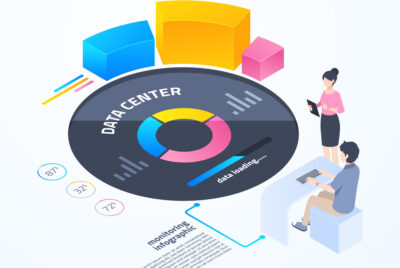Optimizing your website for search engines goes far beyond compressing images or writing alt text. To rank higher, drive meaningful traffic, and convert visitors, you need a comprehensive, data-driven SEO strategy that touches every part of the site—from content and technical performance to competitive positioning and user experience.
Below is a complete breakdown of the critical SEO focus areas:
1. Content Optimization
Effective content is the foundation of SEO. It must be keyword-optimized, user-centric, and technically sound.
- Keyword Research
Use tools like Google Keyword Planner, SEMrush, and Ahrefs to identify high-impact keywords based on search volume, competition, and user intent. - On-Page Content Optimization
Integrate primary and semantic keywords naturally into titles, headings (H1-H6), and throughout the body. Avoid keyword stuffing—aim for readability and engagement. - Content Quality & Freshness
Create valuable, original, and informative content that solves problems or provides unique insights. Update outdated pages regularly to maintain relevance.
2. Technical SEO
Strong technical foundations ensure that search engines can crawl, index, and understand your content.
- Site Speed
Improve load times using Google PageSpeed Insights, GTmetrix, and WebPageTest. Minimize scripts, leverage caching, and optimize hosting. - Mobile Optimization
Ensure full mobile responsiveness and usability. Run regular audits using Google’s Mobile-Friendly Test. - Crawlability & Indexation
Use robots.txt, XML sitemaps, and Google Search Console to ensure clean crawl paths. Fix crawl errors and monitor index status. - URL Structure & HTTPS
Use clean, keyword-rich URLs. Secure your site with an SSL certificate (HTTPS) to build trust and improve rankings.
3. UX & Conversion Rate Optimization (CRO)
SEO isn’t just about traffic—it’s about what users do after they arrive.
- User Navigation
Design intuitive site architecture with logical menus, breadcrumbs, and internal linking. - Readability & Layout
Use legible fonts, sufficient contrast, and break content into scannable sections with subheadings, bullets, and visuals. - Conversion Paths
Track and improve user flows with tools like Hotjar and Google Analytics. Identify and remove friction points. - CTAs & A/B Testing
Test headlines, call-to-action (CTA) buttons, forms, and layouts using platforms like VWO or Optimizely.
4. Internal Linking Strategy
- Strategic Internal Linking
Guide users to key pages and distribute authority across the site. Ensure every high-value page has several internal links pointing to it. - Anchor Text Optimization
Use clear, contextual anchor text aligned with the linked page’s topic or keyword focus.
5. Backlink Profile & Off-Page SEO
Quality backlinks remain one of Google’s top ranking factors.
- Link Acquisition
Build high-quality backlinks through guest posting, content marketing, and digital PR. Prioritize relevance and domain authority. - Toxic Link Disavowal
Monitor and remove harmful links using Google Search Console or Moz Spam Score. - Anchor Text & Link Intersect
Analyze and optimize anchor text distribution. Identify linking opportunities where competitors have coverage but you don’t (using Ahrefs Link Intersect).
6. Local SEO
Vital for businesses with a physical location or regional audience.
- Google Business Profile Optimization
Ensure your listing is complete, accurate, and optimized with categories, images, and Q&A. - Consistent NAP Data
Use Moz Local or Yext to manage your Name, Address, and Phone Number across all local directories. - Local Keyword Targeting
Integrate city or neighborhood modifiers into your pages and meta data.
7. Image Optimization (Deep Dive)
Often overlooked, image optimization can dramatically improve page speed, accessibility, and rankings.
- Descriptive File Names
Use keyword-rich filenames (e.g.,organic-coffee-beans.jpg) instead of generic ones (IMG_001.jpg). - Alt Text
Write clear, relevant alt text with keywords where appropriate. Essential for SEO and accessibility. - Compression & Format
Use TinyPNG, ImageOptim, or JPEGmini to reduce file size. Choose formats wisely:- JPEG: For photos
- PNG: For images with transparency
- WebP: For modern compression (ensure browser fallback)
- Responsive Images
Use thesrcsetattribute or<picture>element to serve appropriately sized images based on device and resolution. - Lazy Loading
Implementloading="lazy"for off-screen images to improve initial page load times. - Sitemaps & Metadata
Include images in XML sitemaps and strip unnecessary metadata using ExifTool. - Contextual Integration
Ensure images are relevant to surrounding content, provide captions when needed, and enhance overall UX.
8. Video Strategy & Optimization
Video is a powerful SEO tool—if used strategically.
- Competitor Video Analysis
Use tools like VidIQ, TubeBuddy, and Social Blade to benchmark performance. - SEO & Metadata
Optimize titles, tags, and descriptions with relevant keywords. Use timestamps, closed captions, and links. - Promotion & Engagement
Share videos via social platforms, embed them into high-traffic pages, and encourage user interaction. - Content Gaps
Identify under-addressed topics and produce valuable, targeted videos to fill those gaps.
9. Structured Data (Schema Markup)
Provide search engines with enhanced context and unlock rich snippets.
- Implement Relevant Schema
Use Product, FAQ, How-To, Article, or Review schema depending on content type. - Tools
Use Google’s Structured Data Testing Tool and Schema.org documentation to validate markup.
10. Competitor & Market Analysis
- Competitive SEO Benchmarking
Compare your domain and page authority, backlink profiles, and ranking keywords against competitors using Ahrefs, Moz, or SEMrush. - Gap & Opportunity Analysis
Identify keyword gaps, content deficiencies, and backlink sources that competitors are leveraging but you are not. - PPC, Social, and Local Strategy Evaluation
Study their ad campaigns, local SEO efforts, and social content for ideas and differentiation opportunities.
✅ Suggested Tool Stack by SEO Function
| Function | Recommended Tools |
|---|---|
| Keyword Research | Google Keyword Planner, Ahrefs, SEMrush |
| On-Page SEO | Yoast SEO, Screaming Frog, Moz On-Page Grader |
| Technical SEO | GTmetrix, Google Search Console, PageSpeed Insights |
| UX & CRO | Hotjar, Optimizely, Google Analytics |
| Link Building | Ahrefs, Moz, Majestic |
| Local SEO | Moz Local, Google Business Profile, BrightLocal |
| Video SEO | TubeBuddy, VidIQ, YouTube Studio |
| Structured Data | Schema.org, Google Rich Results Test |
| Image Optimization | TinyPNG, ImageOptim, Screaming Frog, ExifTool |
| Competitor Analysis | SEMrush, SpyFu, Moz, Ahrefs |
Closing Thoughts
SEO isn’t just about pleasing algorithms—it’s about delivering a faster, better, and more valuable experience to real users. A fully integrated SEO strategy should touch content, UX, technical infrastructure, multimedia, and competitive positioning.
By approaching SEO holistically, you’re not only improving search visibility—you’re laying the groundwork for sustainable digital growth.



